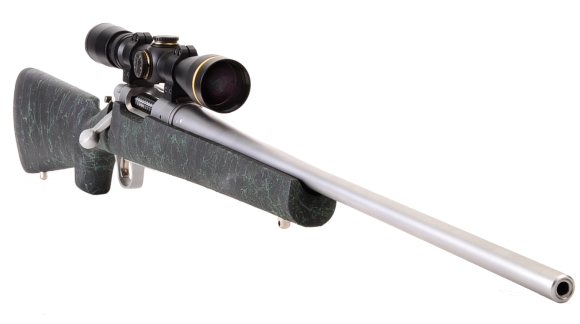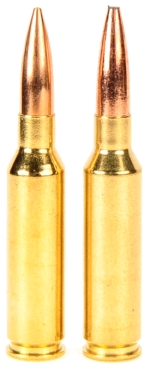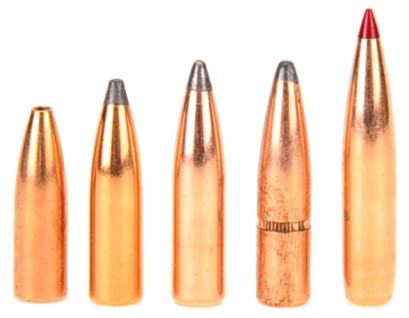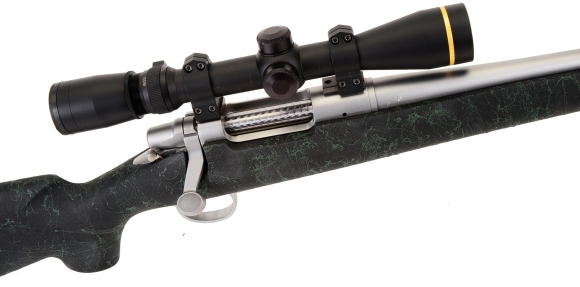
Based on what the eyes see and what resides in memory from experience, it is only human to anticipate a firearm’s performance. It is important, however, to not arrive at any conclusions until all of the qualifying and validating steps have been taken and hard data has been assessed. Unfortunately, a specific type of popular firearm may only be purchased by 0.5% of all gun owners, yet the other 99.5% have no problem rendering a public opinion on the same firearm.
The concepts of freedom of speech and right to an opinion are deeply ingrained in our psyche, as well they should be. So what do we do with all of this information presented in these blend of quantified opinions and conjecture? Take it all in, qualify the sources, look for concurrence within credible sources. Or better yet, skip the subjective opinions, analyze the data presented and arrive at your own conclusions.
presented and arrive at your own conclusions.
When I began Part 2, before live fire and handloading exercises, I anticipated substandard velocity and less than stellar accuracy. That perspective was based on short, lightweight barrel rifle experience and 6.5 Creedmoor experience… but little of that experience was a combination of the two, which made my anticipation no more than conjecture. However, live fire experience gained with this combination proved my concerns to be unwarranted. In any event, and in paraphrase, let’s begin at the beginning and go on till we come to the end: then stop.1)
Baseline
A couple factory ammo types were clocked to see how the 20″ barrel Remington Model Seven handled the 6.5 Creedmoor. The American Eagle 120 grain open tip match, far left, is rated at 2900 fps with a 24″ SAAMI specification test barrel. It went 2692 fps over the chronograph. Federal Fusion140 grain PSP is rated at 2750 fps from a 24″ barrel and it checked at 2625 fps. Interesting similarity in actual muzzle velocity as the match ammo rating is so much higher as was the disparity between its rating and recorded velocity. No, I don’t know why and, no, I don’t want to guess. Next, handloads were tackled.
They look so much nicer before impact

The bullets pictured above, left to right, and defined on the table below, top to bottom, have been used extensively in concert with 6.5 Creedmoor, 260 Remington and 6.5×55 Swedish handloads. Based on experience with a number of shortish barrel 260 Remington chambered bolt action and AR type rifles, a number of long barrel 6.5 Creedmoor projects and a number of favored handloads from well used and well liked 6.5×55 Swedish chambered bolt action rifles, five bullets types were selected. The thought was that this would provide a good way to examine relative performance and to create an opportunity to photograph bullets arranged in order of height and go on to define them in tabular form.
| Bullet | Bullet Type |
Bullet Weight Grains |
Bullet Length “ |
COL Length “ |
Rifling Contact Length ” |
0.260″ Bushing Comparator Length “ |
| Sierra Varminter | HP | 100 | 0.933 | 2.580* | 2.666 | 2.167 |
| Sierra Pro-Hunter | SP | 120 | 1.088 | 2.740 | 2.751 | 2.246 |
| Nosler Partition | SP | 125 | 1.184 | 2.790 | 2.801 | 2.275 |
| Hornady Interlock | PT | 129 | 1.178 | 2.690 | 2.763 | 2.172 |
| Hornady ELD-X | PT | 143 | 1.427 | 2.800 | 2.875 | 2.160 |
*This COL is shorter than minimum SAAMI specification. While this caused no feed or accuracy problems with the Remington Model Seven, it may cause problems in other types of actions or manufacturers’ products.
For clarification – COL is cartridge overall length; tip of bullet to face of case head. Rifling contact length can be compared to COL arrive t safety clearance. The. 0.260″ Bushing Comparator Length is included for folks who mange cartridge length with a comparator rather than bullet tip to case head. The latter underlying logic explained in detail in “Gauging Success – Minimum Headspace and Maximum COL“.
6.5 Creedmoor handloads
Warning: Bullet selections are specific, and loads are not valid with substitutions of different bullets of the same weight. Variations in bullet length will alter net case capacity, pressure and velocity. Primer selection is specific and primer types are not interchangeable. These are maximum loads in my firearms and may be excessive in others. All loads should be reduced by 5% as a starting point for development where cartridges have greater than 40 grains in capacity and 10% for cartridges with less than 40 grain capacity following safe handloading practices as represented in established mainstream reloading manuals. Presentation of these loads does not constitute a solicitation for their use, nor a recommendation.

| Cartridge – 6.5 Creedmoor |
|
| Firearm | Remington Model Seven |
| Barrel Length | 20.00″ |
| Min – Max Case Length | 1.920″ +0.000″/-0.020″ |
| Min – Max COL | 2.700″ – 2.825″ |
| Primer | Remington 9 1/2 |
| Bullet Diameter | 0.2644″ +0.000″/-0.0030″ |
| Reloading Dies | Hornady |
| SAAMI MAP |
62000 PSI |
| Bullet Type | Bullet Weight Grains |
Net H2O Grains Capacity |
COL” | Powder Type | Powder Charge Grains |
Muzzle Velocity fps |
Muzzle Energy ft/lbs |
100 Yard 3 Shot Group ” |
| Sierra | 100 | 49.9 | 2.580 | Re15 | 42.0 | 2943 | 1924 | 1.0 |
| Sierra | 100 | 49.9 | 2.580 | Norma 203B | 42.5 | 3003 | 2003 | 0.6 |
| Sierra | 120 | 52.1 | 2.740 | Re17 | 44.5 | 2868 | 2192 | 0.5 |
| Sierra | 120 | 52.1 | 2.740 | Superformance | 48.5 | 2922 | 2276 | 0.7 |
| Nosler Partition | 125 | 49.3 | 2.790 | Re16 | 45.0 | 2929 | 2382 | 0.9 |
| Nosler Partition | 125 | 49.3 | 2.790 | Re17 | 44.5 | 2902 | 2338 | 0.8 |
| Hornady Interlock | 129 | 47.7 | 2.690 | Re 17 | 44.0 | 2894 | 2400 | 0.7 |
| Hornady Interlock | 129 | 47.7 | 2.690 | Win 760 | 45.0 | 2937 | 2471 | 1.1 |
| Hornady ELD-X | 143 | 46.3 | 2.800 | Re16 | 41.5 | 2500 | 1985 | 0.8 |
| Hornady ELD-X | 143 | 46.3 | 2.800 | Superformance | 44.5 | 2668 | 2261 | 0.6 |
Notes: The powder selected yielded the best results in either velocity or accuracy within the powder types tried within the project. They are all routinely available and are generally well-suited for use with many cartridges… except for Superformance which shows up in few mainstream manuals and in few applications. Re16 and Re17 125 grain Nosler data is correct as it appears in the table. Those are not transposed entries.
Cases were full length sized and trimmed. Standard large rifle primers were used in all. None of the loads were compressed. Case mouths were not crimped. Where a bullet cannelure is present, and a roll crimp is desires, keep it light. The Creedmoor’s sharp shoulder angle, and use of Hornady seating dies that do not support the case body at the shoulders, can result is slightly deformed case shoulders. This may prevent reliable chambering.Accuracy data was gathered with the rifle supported on a target rest with shooting bag at the front and a bunny bag at the toes of the stock, with an 8x scope.
The only eventful occurrence during the handloading process was when I finally ran out of patience with Lyman corncob case cleaning media and tossed it all in the trash. I am not sure why Lyman chose the granular size they did, because it is just the right size to get lodged in case flash holes and to require the use of a metal pick to clear them before seating primers. Time consuming, pain in the butt. Back to RCBS walnut media… or chem clean… or stainless steel pins.
Wrapping up…

There was no significant loss in velocity compared to 24″ barrel rifles in the low and mid range bullet weight range; perhaps 100 fps. Heavier bullet weights, 140+ grains, this grew to approximately 200 fps from typically stated maximum handloads. A short barrel gun for short and mid range shooting applications does not have to attain the same muzzle velocity of a rifle intended for long range shooting. I would definitely consider the 6.5 Creedmoor in a 20″ barrel rifle.
The slender barrel profile did not retain much heat after shooting in groups of ten rounds; way more than a hunter would use who did not need to put in a great deal more range time. I did not thermometer check the barrel temp, but I can say its barrel temperature was greater than ambient, but not hot enough to require oven mitts to touch at its hottest point. Cool down was quick. I apologize for not recording temperature, but it wasn’t exceptional so I didn’t bother. I believe the barrel’s appropriateness is reflected in the rifle’s light weight and accuracy.
The little rifle was enjoyable to shoot. Thanks to an effective recoil pad and excellent stock, recoil was quick, brief and of no consequence.The Remington Model Seven’s compactness and lightweight were appreciated. The stock spider web finish makes for a solid grip when shooting or just handling the rifle and it is aesthetically pleasing. The composite stock and stainless metal parts were blemish free. Nice rifle.

Email Notification